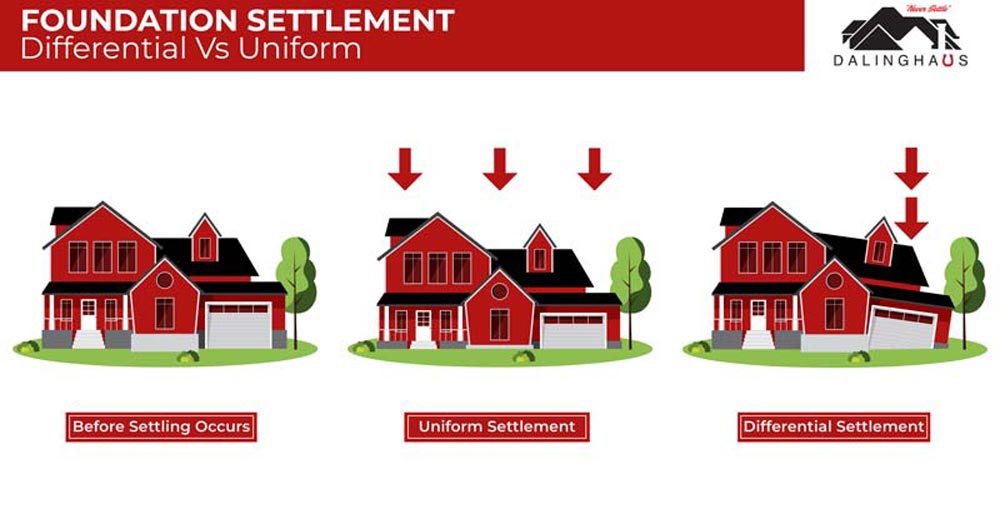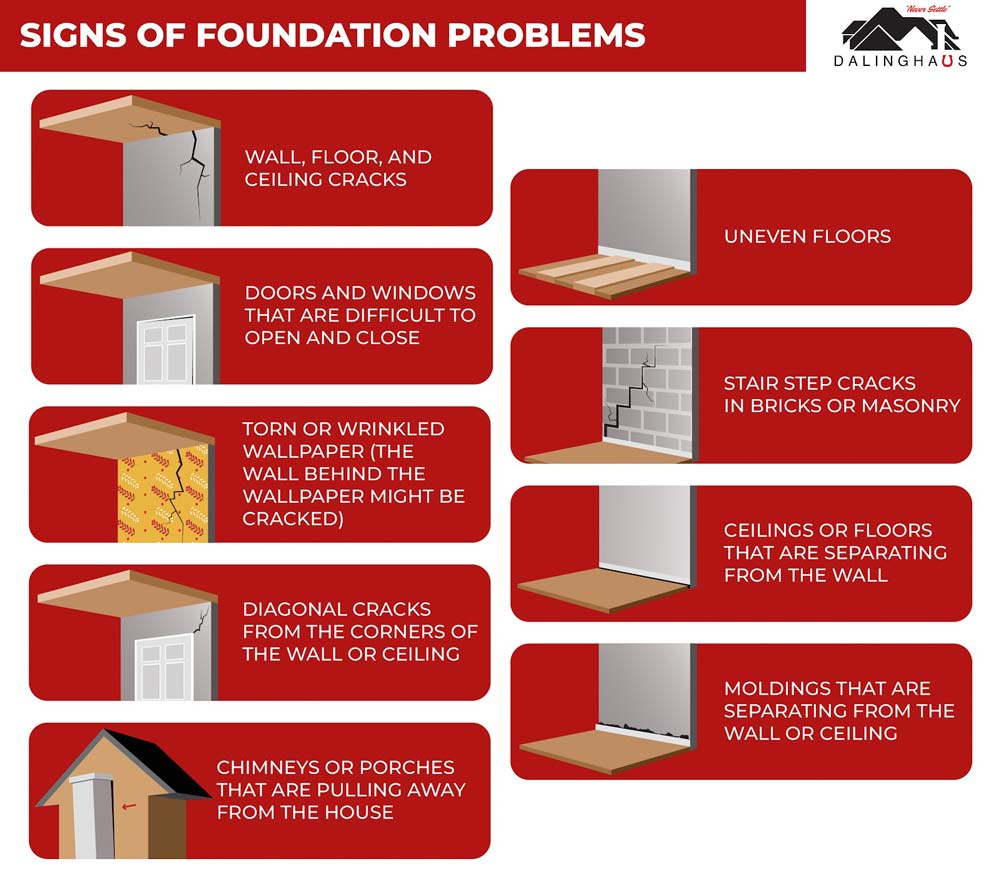Uneven floors can be an annoying and potentially unsafe issue in many homes. Fortunately, there are many solutions you can use to fix your uneven floors. However, you must understand why your floor is sloping to understand the right solution. In this article, we’ll explain why floors become uneven. Once we do that, we’ll share a few of the best ways to make your floors level and easy to walk on again.
Causes of Sloping Floors
When you notice a sloping floor in your home, the first step is to diagnose the underlying cause of the problem. The good news is that most uneven floors result from one of two issues, each of which we have described in the sections below.
Damage to Floorboards and Joists
The first and most obvious reason your floors are uneven is that there is damage to the floor itself or the wooden support structures in your crawl space. Whether due to a direct impact or wear and tear over time, your floor can receive damage.
In many cases, that damage can manifest as broken or bent floorboards that make for an uneven walking surface. When the joists below your floorboards break, this can also cause certain portions of the floor to sink.
Additionally, moisture can play a role in unlevel flooring as well. When moisture accumulates, it can cause the wooden components of your floor to rot, ultimately causing noticeable unevenness. Excessive moisture or humidity can also cause floorboards to bow, making for an uneven walking surface.
Differential Foundation Settling
Uneven floors can also result from foundation settling. If you are familiar with building foundations, you likely know that some degree of settling is normal, especially within the first year after construction.

However, other forms of settling are far more detrimental to the structural integrity of your home. For instance, differential foundation settling involves significant and uneven shifts in your foundation that cause damage and affect the rest of your home.
Differential foundation settling should cause concern and motivate you to seek the assistance of a foundation professional. This form of settling compromises your foundation and leads to other issues throughout your home, one of which is sloping floors.
How Much Slope is Too Much?
Understanding the leading causes of uneven floors is a great starting point. The next step is to learn the signs that your floor is sloping too much.
To evaluate a sloping floor, recall that every slope has a rise and a run. In other words, every slope has a certain amount of vertical change over a certain horizontal distance.
If you notice that your floor slopes more than half an inch over a horizontal distance of 10 feet or less, there is a good chance that you should seek repairs from a professional. Floor slopes of this degree often indicate damage to the floor itself or a foundation issue.
However, while this figure is a good guideline, you should also consider the ease and comfort you feel while walking on the floor. Any time your floor slopes enough to be uncomfortable or unsafe, you should seek professional assistance regardless of the floor’s specific slope degree.
Repairing Uneven Floors
How you repair your floors depends on the original cause of the slope. The sections below will explain the best repair approaches in two specific scenarios.
Repairing Damaged Floors and Joists
When direct damage to the floor is the cause of the unevenness, the best approach is to hire a contractor to evaluate the flooring and its joists. That contractor may determine that a minor repair will resolve the problem. In other instances, they may deem it necessary to replace your floor entirely.
Repairing Floors that Slope Due to Foundation Damage
Similarly, if your floor slopes because of a foundation issue, you will also need to seek the help of a professional. One of the most common ways that a foundation team will conduct repairs is by installing push piers to level your foundation and increase its stability. However, regardless of what the appropriate solution proves to be, finding a trusted foundation professional in your area is the smartest way to resolve floors that slope due to foundation issues.
Other Signs You Might Have a Foundation Problem
As we have mentioned, there are plenty of cases in which sloping floors result from differential foundation settling. However, for most homeowners, it is difficult to determine whether settling or damage to crawl space support structures is the cause of your floor slope. To make a more accurate evaluation of your sloping floor and whether settling is the cause, it is helpful to know some other signs that your foundation is settling unevenly.

When your foundation experiences differential settling, there will be a few noticeable signs. For example, uneven settling often causes doors to get stuck, windows to jam, and floors to become uneven.
If your foundation settling is severe, you may also notice cracks in your foundation walls. When these cracks are horizontal or large enough to allow air and water to seep in, rest assured that you have a foundation problem that warrants professional attention.
Find the Help Your Floors Need
As soon as you notice that your floors have become uneven, the best approach you can take is to contact a professional team that can diagnose the issue and give you a plan to resolve it.
If you live in Southern California, Nevada, or Arizona, Dalinghaus Construction is the best team you can rely on for all your foundation needs. We have the expertise and experience to quickly detect the cause of your uneven floor. We’ll also be prepared to pair you with the perfect foundation repair solution.
At Dalinghaus Construction, we pride ourselves on providing our customers with the support and answers they need to restore the structural integrity of their home’s foundation. If you want to learn more about the specific ways we can help you, reach out today for a free evaluation.






